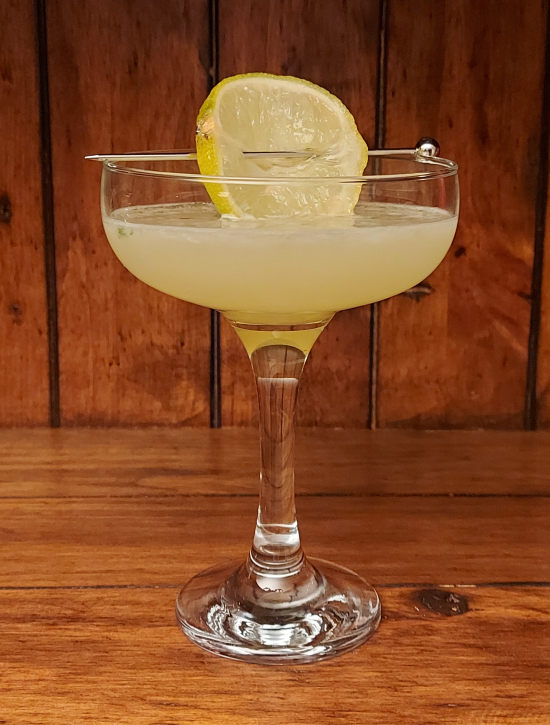
The first cocktail, created by Sir Francis Drake in 1586, somewhere near Havana, Cuba, and the precursor to the modern mojito.
Cut the lime into cubes and place into a cocktail shaker.
Add the mint leaves and sugar and muddle.
Add a white rum to the shaker.
Shake until the sugar has dissolved and combined.
Modern drinkers may like to add ice to the shaker to chill the drink, but Drake won't have had ice, so this step can be omitted for a more authentic cocktail; if adding ice, shake until well-chilled.
Strain into a cocktail glass and garnish with a lime wheel.
According to legend, Francis Drake and his fleet were somewhere near Havana, in the Caribbean, plundering Spanish ships and towns, when his crews were taken ill and were too sick to sail.
Drake, using local medicines from the local Taino and Ciboney Indians as ingredients, created an-all new elixir; lime to treat scurvy, mint to calm the stomach, chuchuasi tree-bark, which has numerous healing benefits, soaked in rum and a little cane sugar to enhance the taste. This remedy is today known as the El Draque after Francis Drake himself, using his Spanish nickname, and is the precursor to the modern mojito.
So who was Francis Drake? Sir Francis Drake, born ~1540 in Tavistock, Devon, England and died on 28 January 1596, was an English explorer and privateer best known for his circumnavigation of the world in a single expedition between 1577 and 1580. This was the first English circumnavigation, and third circumnavigation overall. He is also known for participating in the early English slaving voyages of his cousin, Sir John Hawkins, and John Lovell. Having started as a simple seaman, in 1588 he was part of the fight against the Spanish Armada as a vice-admiral.
At an early age Drake was placed into the household of a relative, William Hawkins, a prominent sea captain in Plymouth. In 1572, he set sail on his first independent mission, privateering along the Spanish Main. Drake's circumnavigation began on 15 December 1577. He crossed the Pacific Ocean, until then an area of exclusive Spanish interest, and laid claim to New Albion, plundering coastal towns and ships for treasure and supplies as he went. He arrived back in England on 26 September 1580. Elizabeth I awarded Drake a knighthood in 1581 which he received aboard his galleon the Golden Hind.
Drake's circumnavigation inaugurated an era of conflict with the Spanish and in 1585, the Anglo-Spanish War began. Drake was in command of an expedition to the Americas that attacked Spanish shipping and ports. When Philip II sent the Spanish Armada to England in 1588 as a precursor to its invasion, Drake was second-in-command of the English fleet that fought against and repulsed the Spanish fleet. A year later he led the English Armada in a failed attempt to destroy the remaining Spanish fleet.
Drake was the Member of Parliament (MP) for three constituencies: Camelford in 1581, Bossiney in 1584, and Plymouth in 1593. Drake's exploits made him a hero to the English, but his privateering led the Spanish to brand him a pirate, known to them as El Draque ("The Dragon" in old Spanish). He died of dysentery after his failed assault on Panama in January 1596.
[cocktail-ingredients]
Uses information from the Sir Francis Drake Wikipedia article.
Ingredients
Directions
Cut the lime into cubes and place into a cocktail shaker.
Add the mint leaves and sugar and muddle.
Add a white rum to the shaker.
Shake until the sugar has dissolved and combined.
Modern drinkers may like to add ice to the shaker to chill the drink, but Drake won't have had ice, so this step can be omitted for a more authentic cocktail; if adding ice, shake until well-chilled.
Strain into a cocktail glass and garnish with a lime wheel.
